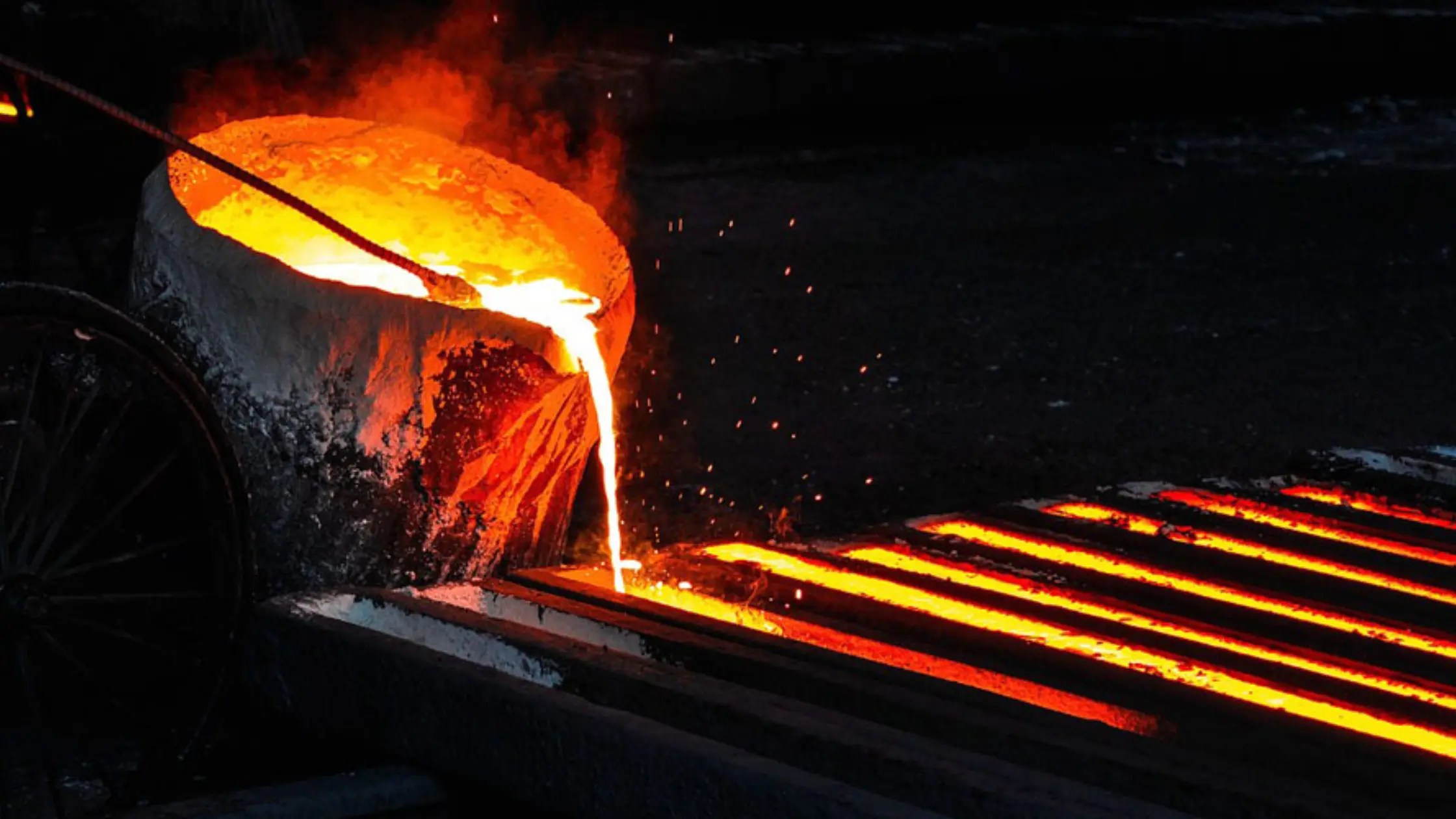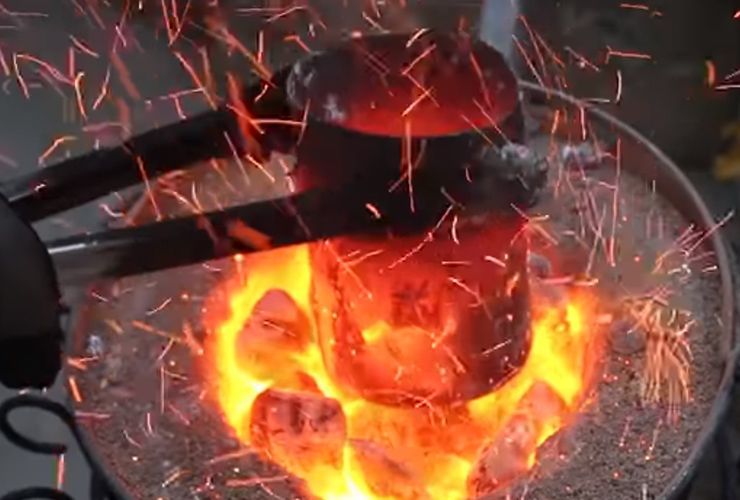A Comprehensive Guide to Metal Casting Techniques and Their Contemporary Roles
Wiki Article
Discovering the Art of Metal Casting: Methods and Applications in Modern Foundries
Metal casting is a time-honored craft that integrates artistry with engineering precision. From ancient methods to contemporary developments, this procedure has progressed considerably. Various approaches, such as sand casting and lost-wax casting, display the adaptability of the tool. Meanwhile, developments like 3D printing are reshaping exactly how foundries run. As the lines in between functionality and creativity blur, one must take into consideration just how these developments effect both conventional techniques and contemporary applications. What lies in advance in this advancing landscape?The Fundamentals of Metal Casting
Metal casting, a crucial process in production, involves putting liquified metal into a mold and mildew to achieve a preferred form. This method works as a structure in the manufacturing of complicated steel components across various markets. Crucial element of steel casting consist of the selection of materials, which can vary from aluminum to steel, each selected for its specific residential or commercial properties and application suitability. The procedure starts with mold and mildew development, which can be made from sand, metal, or ceramics, relying on the casting method utilized. The liquified steel is after that carefully poured into the mold, where it strengthens and cools. Important variables such as temperature control, cooling rate, and mold style considerably affect the final item's top quality and qualities. On top of that, comprehending the chemical and physical homes of the metal aids in maximizing casting efficiency, inevitably enhancing the performance of the manufacturing procedure and guaranteeing high-grade outcome customized to details demands.Typical Casting Techniques
Standard casting techniques encompass a variety of techniques that have stood the examination of time, demonstrating their efficiency in generating elaborate steel parts. One noticeable method is sand casting, which utilizes a combination of sand and a bonding agent to develop mold and mildews. The flexibility of sand casting enables the manufacturing of diverse shapes, making it suitable for both massive and small-scale manufacturing. Another notable technique is financial investment casting, usually utilized for specific and complicated geometries. This technique entails creating a wax pattern that is covered in a ceramic covering, which is after that warmed to remove the wax, leaving a tooth cavity for liquified metal. In addition, die casting is made use of for high-volume manufacturing, where molten steel is injected right into multiple-use metal molds. Each of these traditional methods continues to be pertinent, showcasing the workmanship and skill inherent in the art of metal casting, while meeting the demands of numerous industries.Modern Innovations in Metal Casting
As industries develop, innovations in metal casting are reshaping production processes and enhancing performance. Advanced innovations such as 3D printing and computer-aided design (CAD) are reinventing mold production, enabling intricate styles that were formerly unattainable. These techniques assist in fast prototyping, decreasing lead times and promoting creativity in product development.Furthermore, the assimilation of automation and robotics in foundries is enhancing operations, reducing human error, and enhancing safety. Smart sensing units and real-time surveillance systems enable exact control of temperature and material residential properties, guaranteeing higher quality results.
Sustainable practices are arising, with the usage of recycled products and energy-efficient heaters, lowering environmental effect. The adoption of sophisticated alloys and composite products is additionally expanding the possibilities of metal casting, causing stronger and lighter parts. On the whole, these modern-day advancements are transforming metal casting right into a more effective, accurate, and eco accountable market.
Applications Across Numerous Industries

While diverse industries significantly rely on steel casting, the method's flexibility plays a crucial function in conference particular application needs. In the auto industry, steel casting is important for creating engine parts, transmission housings, and various other detailed components that need precision and resilience. The aerospace market benefits from lightweight casted elements, guaranteeing both performance and fuel performance. In addition, the construction industry uses metal casting for architectural aspects, such as beam of lights and sustains, boosting the integrity of bridges and structures.
Moreover, the energy sector employs metal casting for generator blades and other considerable equipment that must withstand extreme conditions. Clinical tools additionally see applications of steel casting, specifically in medical tools and prosthetics, where precision is critical - Aluminum Foundry. On the whole, the versatility and dependability of steel casting make it vital throughout different fields, adding to the advancement of technology and infrastructure in modern-day culture
The Artistic Side of Metal Casting
Often connected with commercial applications, metal casting also finds its place in the domain of art, where skilled artisans transform molten metal into elaborate designs and meaningful sculptures. This imaginative side of steel casting encompasses diverse techniques, consisting of sand casting, lost-wax casting, and financial investment casting, each offering one-of-a-kind opportunities for creative thinking. Artists make use of these techniques to create works that range from abstract kinds to natural representations, enabling individual expression and discourse on modern issues.
Frequently Asked Questions
What Precaution Are Essential in a Metal Casting Foundry?
Crucial precaution in a steel casting factory consist of personal safety tools, appropriate air flow, emergency situation procedures, training in taking care of molten steels, normal equipment maintenance, and clear interaction of hazards to guarantee employee safety and health and wellness. Aluminum Casting.How Do Environmental Regulations Impact Metal Casting Processes?
Ecological laws greatly affect metal casting procedures by mandating the usage Your Domain Name of cleaner modern technologies, minimizing emissions, and advertising waste management techniques. Conformity usually calls for financial investments in equipment, training, and alterations to existing treatments to reduce environmental influence.What Are the Common Flaws in Metal Castings?
Common problems in steel spreadings include porosity, shrinking, incorporations, and misruns. These issues can arise from improper mold layout, inadequate temperature control, or contamination, eventually influencing the structural integrity and total top quality of the last product.Just How Is Waste Managed Throughout Metal Casting Production?
website link Waste administration in metal casting production involves reusing scrap metal, executing effective product usage, and utilizing innovative innovations to reduce waste. Factories take on techniques like sand recovery and correct disposal approaches to decrease environmental impact.What Profession Opportunities Exist in the Metal Casting Market?
The metal casting industry provides diverse career opportunities, including roles such as shop supervisor, metallurgical designer, top quality control assessor, pattern manufacturer, and manufacturing supervisor, catering to different capability and competence in producing procedures.Metal casting, a pivotal procedure in production, includes pouring liquified steel right into a mold and mildew to accomplish a desired form. Furthermore, pass away casting is used for high-volume manufacturing, where molten steel is infused right into reusable metal molds. While diverse markets progressively rely on steel casting, the strategy's versatility plays an essential role in conference certain application demands. Usually linked with industrial applications, metal casting additionally finds its place in the domain name of art, where skilled craftsmens transform liquified steel right into detailed styles and meaningful sculptures. Waste administration in metal casting manufacturing involves reusing scrap metal, applying reliable article material use, and using sophisticated innovations to reduce waste.
Report this wiki page